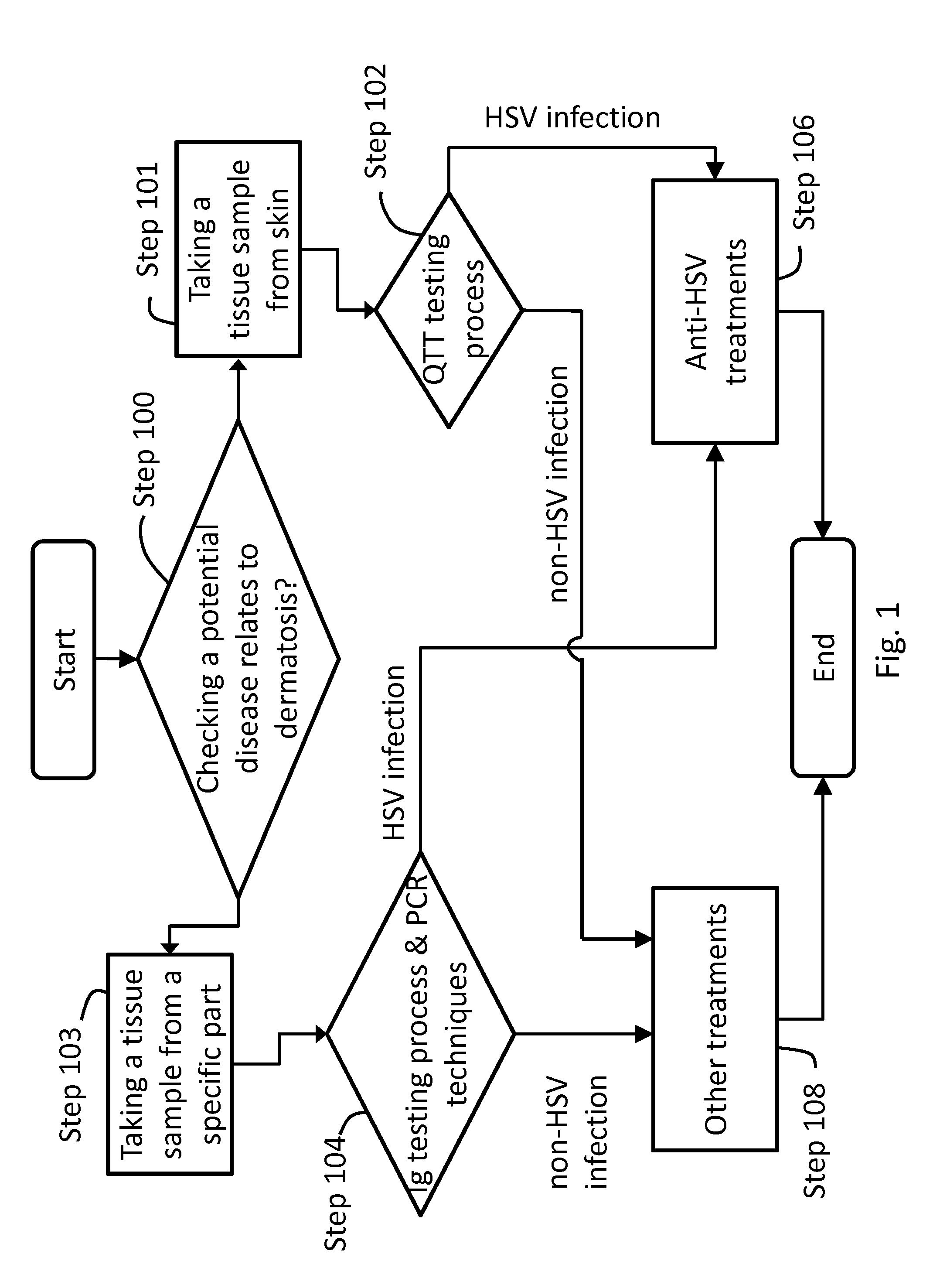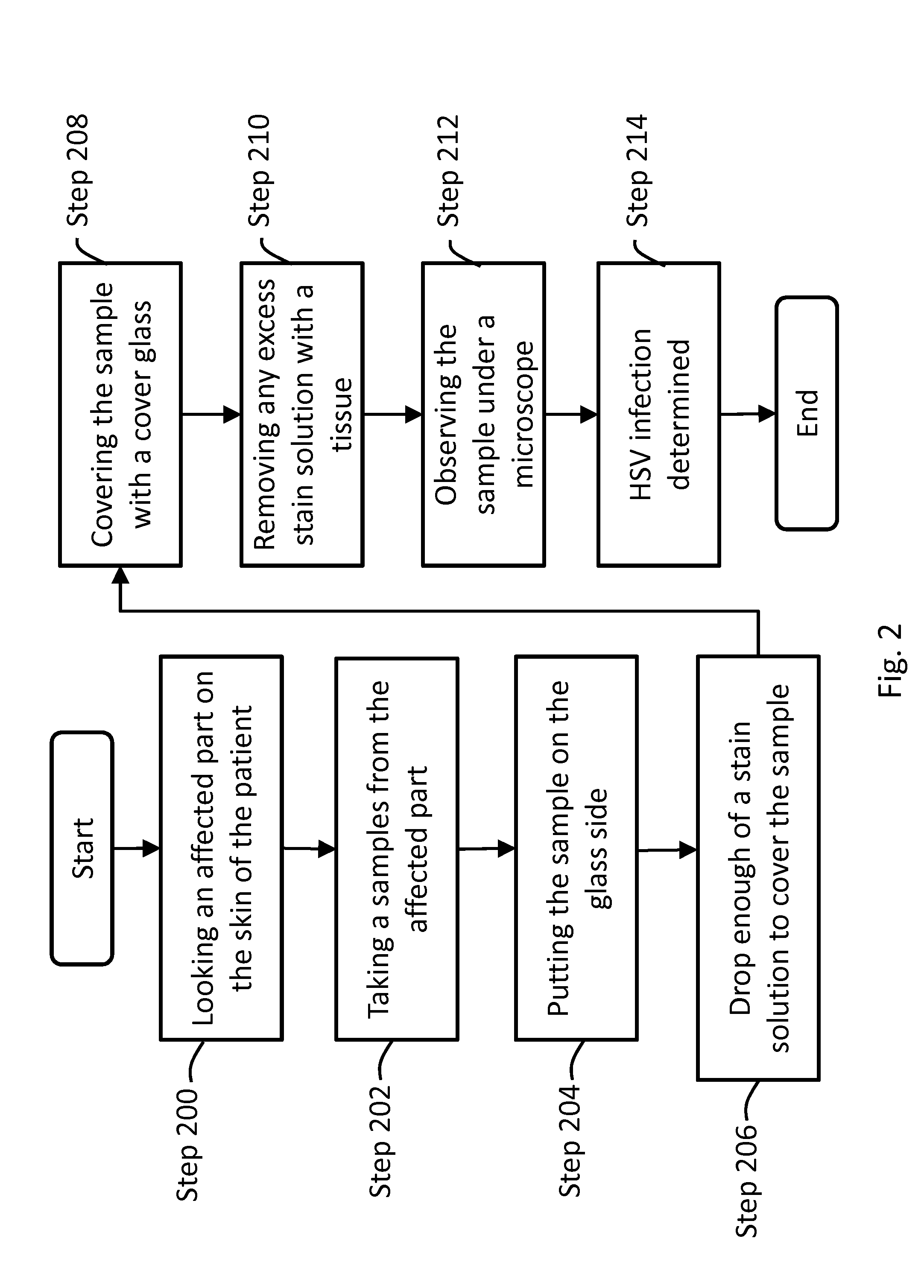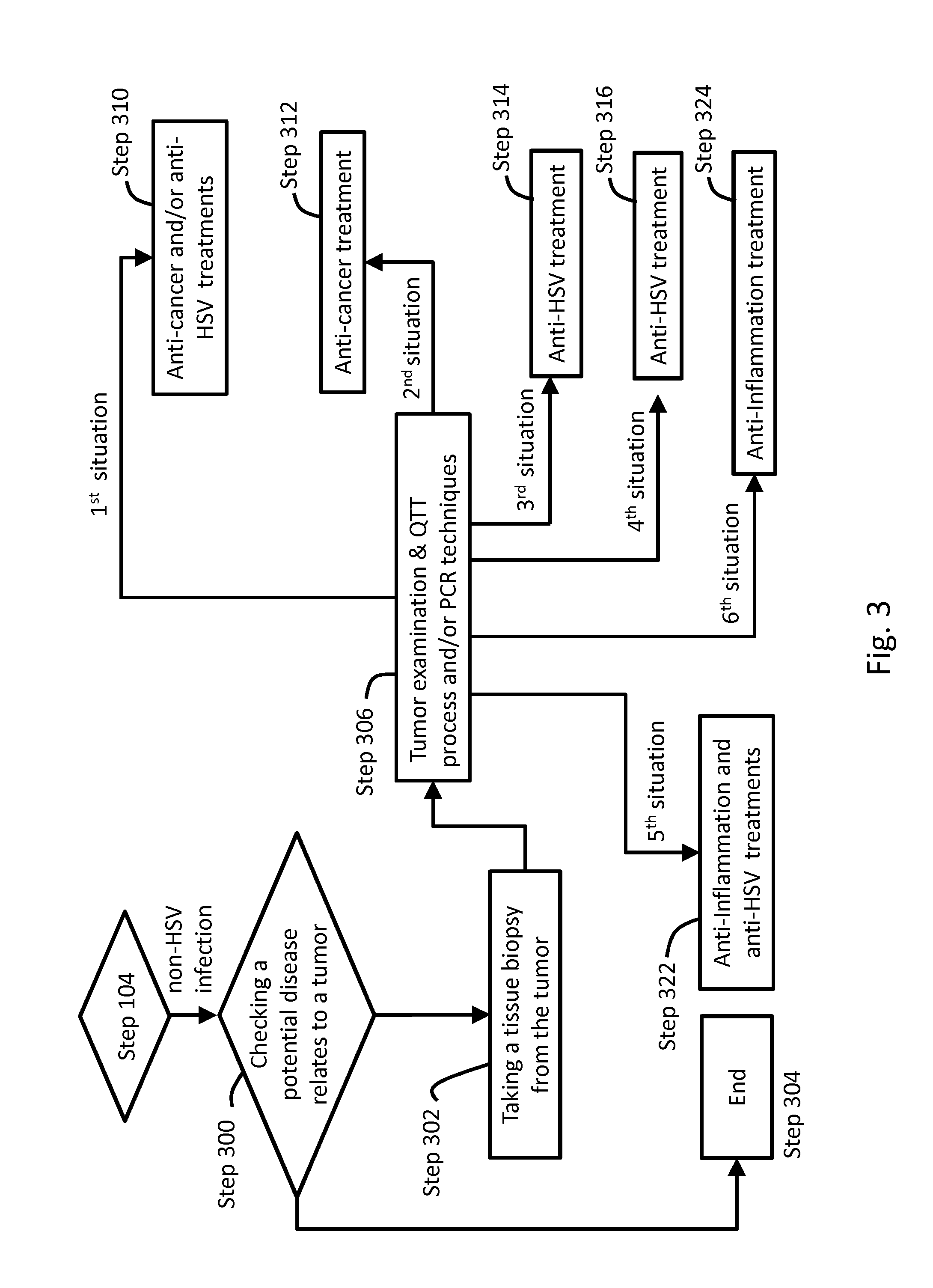Medicament for treating peripheral neuropathies
a peripheral neuropathic and medicine technology, applied in the field of medicine for treating peripheral neuropathies, can solve problems such as life-threatening complications
- Summary
- Abstract
- Description
- Claims
- Application Information
AI Technical Summary
Benefits of technology
Problems solved by technology
Method used
Image
Examples
case 1
[0318] A 20-day-old newborn suffered from pin-sized vesiculopapules and pustules appearing over his forehead and extending to his cheeks and mandibles 10 days after his birth (FIG. 10-1a). Balloon degeneration of the squamous cells, intraepithelial vesicles and a balloon cells nest were observed by a QTT of a vesiculopapule (FIG. 10-1b). High power observation revealed that there were many eosinophils infiltrating between the BCs (FIG. 10-1b). The patient was treated with antiviral agent and TCS. His older brother suffered from HSV-associated dermatitis on his trunk 6 months after birth. His mother was diagnosed to have HSV-associated dermatitis when she was pregnant for her 2 boys. Her HSIgG titer was 12.5.
case 2
[0319] A 4-month-old newborn presented with a pustule over its right nostril (FIG. 10-2a). She began to suffered from itchy multiple vesiculopapules over her face and trunk since she was 2-month-old. Her mother had past history of HS vesicles over her forearm. This is the third episode of QTT-positive eruptions and the first time appeared with single lesion on face. Balloon degeneration of the follicular epithelium, a balloon cell and a giant cell were observed by QTT (FIG. 10-2b), which is compatible with cytologic finding of HS infection. The pustule and the concurrent itchy multiple vesiculopapules over her trunk responded to antiviral agents. There was no recurrence for 3 months till now.
case 3
[0320] A 5-month-old newborn suffered from a crusted plaque over the frontal area of her scalp for 2 months. Many pin-sized vesiculopapules and pustules appearing over his cheeks 5 days ago. Dryness and scaliness around her mouth were also noted. QTT of vesiculopapules from her cheek revealed a nerve extending from the dermis (vesicular cavity) to its overlying epidermal sheet (FIG. 10-3a). Balloon degeneration of cells near the basement membrane and a giant cell with many pleomorphic nuclei were also observed under high power observation (FIG. 10-3b). The facial eruptions disappeared completely 3 days after the antiviral therapy (FIG. 10-3c). There were still some light-brown crust on the periphery of the frontal area (FIG. 10-3d). Her mother had past history of HS infection on her toes during pregnancy. Her father had a history of HS labialis for years and two episodes of HSV-associated dermatitis.
PUM
| Property | Measurement | Unit |
|---|---|---|
| Area | aaaaa | aaaaa |
Abstract
Description
Claims
Application Information
 Login to View More
Login to View More - R&D
- Intellectual Property
- Life Sciences
- Materials
- Tech Scout
- Unparalleled Data Quality
- Higher Quality Content
- 60% Fewer Hallucinations
Browse by: Latest US Patents, China's latest patents, Technical Efficacy Thesaurus, Application Domain, Technology Topic, Popular Technical Reports.
© 2025 PatSnap. All rights reserved.Legal|Privacy policy|Modern Slavery Act Transparency Statement|Sitemap|About US| Contact US: help@patsnap.com



